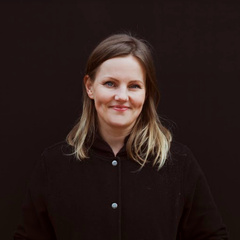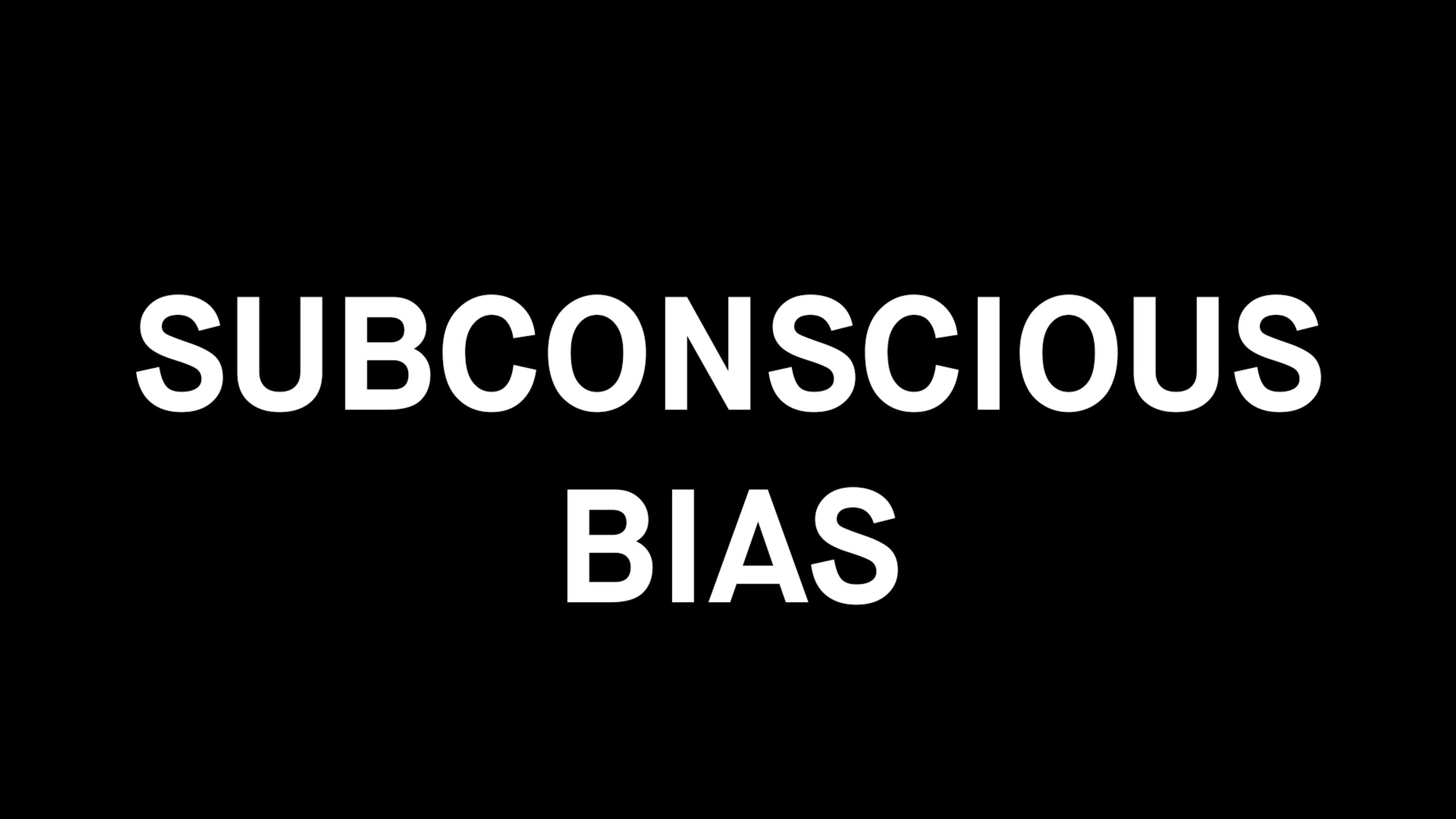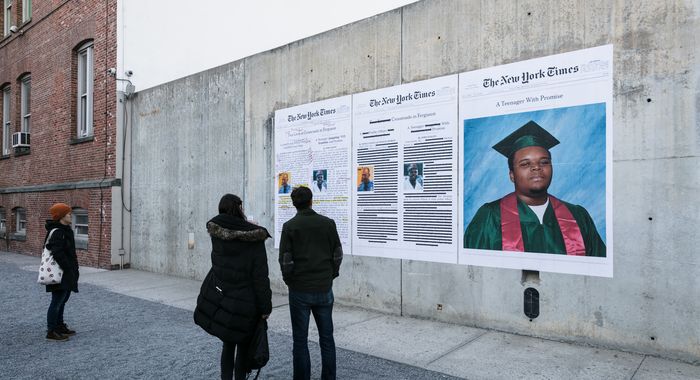The bias within
All of us are prejudiced. Like walking human sponges, we soak up generalisations about other people from the moment we appear on this earth via social conditioning, cultural stereotypes and personal experience, not to mention outdated evolutionary instincts that encourage us to equate sameness with safety. Unless you’re openly racist or sexist, these biases will be subconscious, subtly altering your decision making without you even noticing. Perhaps you’ll be drawn to an interview candidate that has a similar CV to your own or mistake “good at her job” with “approaches tasks like me”. Here bias is not the problem per se, but the lack of awareness. Unless checked, the dominant narrative replicates itself, and people that are white, male, cisgendered, able, wealthy or experience privilege of another sort are given more opportunities to succeed.
Given just 13% of the UK design industry are from black, Asian and minority ethnic backgrounds and only 17% of design managers or owners are female, for us the issue of unconscious bias is very immediate. Ahead of our soon-to-launch campaign to improve diversity in our industry (more on that in a few weeks), we invited clinical psychologist, Dr Jessica Munafo, to help us unpack subconscious bias (also called unconscious or implicit), just as she addressed resilience and burnout in previous essays. Here she guides us through the process of acknowledging the prejudices embedded deep in our brains and sheds light on how we can untangle them from our decision making. Making subconscious bias conscious
In my work, I often see meaningful change as involving three key aspects: insight, dialogue and action. In order to act differently, first we need to have had the kind of conversations or self-talk that help us break from previous patterns and step into a new way of being. So far, so good. We think, we talk, we move. But what about when we are not aware of needing to change, or when there are hidden barriers to the process that we are barely conscious of?
On the whole, we like to think of ourselves as decent people. The ego works hard to turn its ‘best self’ towards the sun and avoid thinking about the shadows that fall behind us. For much of our lives we attempt to ignore aspects of ourselves and our experience that we find unacceptable or intolerable; often unthinkingly. However, as our emotional maturity deepens, we are able to acknowledge that these negative aspects are as much part of us as the good bits and can start to unpick how they affect our behaviour. We eat up our shadows as it were and are satiated by our wholeness. We bring all the hidden assumptions we make, the cognitive distortions we hold and the skewed perceptions we lean into the light so that we can work on them.
What type of shadows do you bring to your workplace? Shaped by forces beyond our control, we may find ourselves making decisions and value judgements that maintain an unhelpful status quo, or even structural inequalities. This insidious process is all the more tricky as we are barely aware that it is happening. So, what should we look for when trying to find our blind spots, and addressing any power imbalances associated with them?
Motivation, motivation, motivation
Humans have evolved systems dedicated to both competition and cooperation. The settings we work, rest and play in can heighten or lessen either of these deeply held drives. Think about how your context might be influencing your mindset and then consider what you or your field might be missing if it continues in this way. Diverse teams are innovative teams. Set your intention in the direction that you wish to head in.
Raising our consciousness about how we might be participating in systemic or institutional oppression can bring up a huge amount of anguish. This is a natural part of the change process. Shame is common and unfortunately it can lead to us closing down, concealing or turning away. If you can, hold onto your learning with compassion so that this energy can be transformed into progress.
When people become aware of injustice, especially when they have very little or no lived experience of that injustice, they often become very anxious about the best way forward. ‘What can I do?!’ Remember that you know your industry and your neighbourhood and your social circle – be creative and think about ways that your everyday spaces could become more open and accessible.
Know the limits of your expertise
Saying that, it is important to be aware of when you are straying into territory that is beyond your competence or understanding. If you plan an initiative or project that is designed to increase social inclusion, seek consultation (preferably from someone who does have some lived experience of the exclusion that you are hoping to reduce). However, stay mindful of the fact that no one owes you a conversation on these issues and that what might feel interesting or positive to you may be triggering, burdensome or even socially violent to someone else. Listen to the feedback, be willing to be changed by that feedback, leave your ego outside the door if it’s interfering.
Authentic inclusion and a diversity of ideas, rather than representation by numbers, is worth holding in mind. Women are perfectly capable of supporting patriarchy, gay people are able to go along with heteronormism, people of colour will sometimes reproduce white supremacy in settings and institutions that are heavily invested in these processes. When business planning and seeking consultation, think critically about what societal pressures people might be operating under.
Many people, in particular those from privileged or majority groups, often see their social environments as being neutral spaces, populated by faces and voices and opinions that are similar to their own. The idea that diversity is ‘out there’ rather than ‘in here’. Robin DiAngelo, in her reflections on social patterning with regard to ethnicity, talks about how it is important for white spaces to be identified as equally ‘racially active’ as any other space, if not more. Question how your environment has been set up and how it perpetuates itself.
Turn to face your barriers
Tackling these issues can bring you into contact with the vastness of the world’s troubles which can undermine your hopefulness. The ‘think globally, act locally’ slogan can be helpful here. Fear of making mistakes can be a troublesome hurdle too. It might help to be certain that you definitely will make mistakes but not let this be an excuse for complacency or insensitivity. The major mistake to try to avoid is centering yourself in your endeavours. Affirmative action and performative action are not the same thing.
Courage, courage, courage
Finally … sometimes you will simply need to be brave. Anticipate pushback from others at a different stage in the trajectory (either further back or further along in the consciousness journey). It’s not the Woke Olympics. This type of work can never be a purely intellectual exercise – if it doesn’t hurt sometimes, then you’re probably holding back. Being whole-hearted as you eat up your shadows will make them much easier to digest.
Click here, to read more features on our website. 





